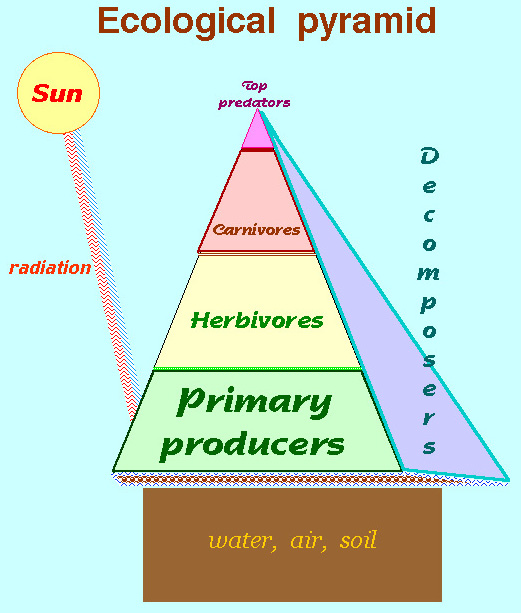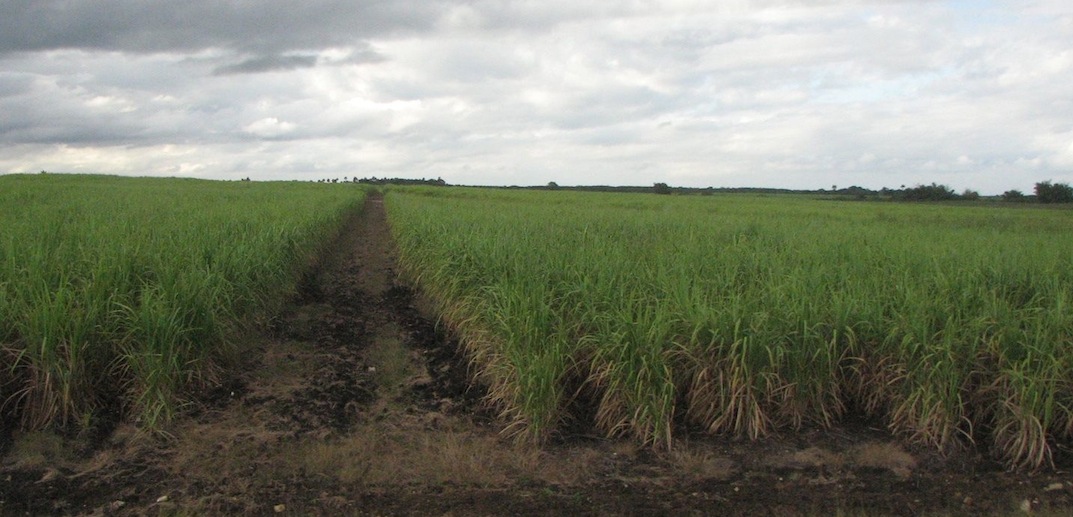The Cuban sugar cane fields shape the countryside due to agricultural practices.
Organize to Reflect and Evaluate
Sydney Mintz's arguments
Mintz, however suggests that "For the Caribbean region as a whole, the steady demand overall and for most epochs has been for sugar . . . , the Caribbean has figured importantly in the picture for centuries."
"Our awareness that food and eating are foci of habit, taste and deep feeling must be as old as those occasions in the history f our species when human beings first saw other human beings eating unfamiliar foods."
(p. 3)
Lists | Introduction | Three ways to arrange & order | Argument | Question | Evidence | Source | Summary
He argues that fashion or taste drives social transformation and not simply a demographic or ecological change in conditions. As such he insists that you know "how meaning is put into behavior." For Mintz, culture must be understood "not simply as a product but also as production, not simply as socially constituted but also as socially constituting.”
Mintz, pp. xvi-xvii, 3, 14.
Exercise one has four steps.
In a two-column list of describe the leading impacts of sugar cultivation according to Mintz. In one column place "Factors in Mintz's argument" in the other "Evidence for what these mean," with a space for noting the page references
"It provides the raw materials out of which much of the meaning in life is given voice."
"Meaning, in short, is the consequence of activity."
p. 14.
| Factors in Mintz's argument: | ? | Evidence for what these mean |
|---|---|---|
p. 14, |
"Meaning in this case . . . arises from the cultural applications to which sugar lent itself, the uses to which it was put." | |
| food systems | p. 3, |
variability of humankind |
| food | p. 11, |
Who defines what is food? |
| commodities | p. 58. | |
Now compare the list you have made in two steps to:
1) First argument.
2) Second argument.
Then summarize in three paragraphs and post those paragraphs to a discussion board
". . . no ancestral predisposition within the species can adequately explain what are in fact culturally conventionalized norms , not biological imperatives."
p. 15.
Ecology is filtered by cultural norms:
Compare your list of factors to this revised diagram of an ecologically coherent list of relations such that social habits are dictated by culture, not just ecology.
| Terms | |||
|---|---|---|---|
| Ecological Factors | |||
| health | |||
| Cycle of relations | population |  |
surroundings |
| Cultural norms | taste | "place" | |
| food | |||
| land pyramid |  |
||
| ingredients | nutrients | land | water |
Compare and contrast verbally and in writing.
Secondly, with respect to your list make notes how the factors you identified are influenced with respect to his remark on page 15 when Mintz makes this observation:
"In 1650, the people of what was to become the United Kingdom also lived on a starch-centered diet. Within a single century, they began to move toward a pattern that has since been adopted by many other societies. This transformation exemplifies one sort of modernization."
Is the observation above an argument?
By compare; comparing Mintz's approach to the Land, Labor and Wealth model of economic relations.
"one-starch centricity"
contrast; contrasting–
"But it was not simply the consequence of other more important changes; indeed . . . it may have been the other way around: this and like dietary transformations actively facilitated more fundamental changes in British society."
p. 14.
next
Thirdly: Now pull these lists together by first drawing lines to connect between related items.
"but human beings never eat and don't eat every edible and available food in their environment" (p. 3.) >-----------------------------> "people subsist on some principle complex carbohydrate, usually a grain or root crop around which their lives are built."(pp. 10-11).
Fourthly, what common elements that touch more items on these listings of influences and factors appear more frequently than any other concept, circle the top two or three concepts that link to most, or all the others.
Lists | Three ways to arrange & order | Revolutionary | Question | Evidence | Summary
![]()
 Three Ways to organize the ideas:
Three Ways to organize the ideas:
-
1) etymologically by the origins of key words |
-
2) chronologically by when |
-
3) ecologically by how functions are related.
ETYMOLOGY the origins of sugar, sweet, sweetness and power or imagination
"the very idea of sweetness came to be associated with sugar in European thought and language"
p.17.
HISTORY. Chronological
8000 BC, domestication of cane in New Guinea (Indonesia)
400-300 BC, The mention in Vedic texts of sugar in Hindu India
327 BC, Alexander the Great's army references Indian sugar (sweet syrup)
pp. 19-20.
"starch-centered diet"
p. 14.
ECOLOGY. Hispaniola, called Ayiti in Taino, The Spanish Isle.
1460, Madeira had its first sugar mill, from the Mediterranean
1478, Spanish island of Madeira leads in sugar cane plantations exporting sugar.
1493, Columbus brings sugar cane to Española from the Canary Islands.1516, Santo Domingo / Española exported first sugar (molasses ) to Spain.
post 1517 : 125 tons of sugar produced in Española by water powered mills per year
1530, there were thirty-four sugar mills in Española
1568, Sugar Plantations common in Española with 150-200 slavespp. 33-36.
More dates
Lists | Three ways to arrange & order | Revolutionary | Question | Evidence | Summary
![]()
What are we about do do?
Summarize the transformation of the British character and economy due to the increasing consumption of sugar.
This thinking – analogical analysis – means breaking things down into comparable concepts that make up a bigger whole. This process of analysis is what serious thinking is all about. The outcome is the practice and improvement of a critical capacity to distinguish errors from verity.
Fashion & Style: The modern flavor or "taste tetrahedron."
The Juxtaposition of flavors glutamate Saltiness piquant Sweetness Sourness bland Bitterness methanethiol
There is more to flavor than the traditional four types of tastes.
 Question?
Question?
What is Mintz's point here?
"The widely different ways that sweetness is perceived and employed support my argument that the importance of sweetness in English taste preferences grew over time, and was not characteristic before the 18th century."
How is it critical:
"I suspect that this counter-position –in which sweetness becomes the 'opposite"' of everything –is quite recent."
p. 18.
What to know:
The food enabled a population explosion in Europe. Commerce based on gold, silver, sugar, tobacco, hides & tallow, and human labor added further to the wealth of western European nations, banks and joint stock companies. But is the "flavor" of food a clue to some deeper consequential change?
"Transformations of diet entail quite profound alterations in people's images of themselves, their notions oft he contrasting virtues of tradition and change, the fabric of their daily social life."
p. 13.
Argument to know:
"One might ask what difference it makes whether one calls the plantation system 'capitalistic' or not. The question matters because it has to do with the way economic systems grow and change, and with the chain of causation that leads from one stage to another."
"I have argued that the plantations were themselves precocious cases of industrialization."
" . . .slave labor is so contrary a form of labor power to be associated with 'the capitalist mode of production,' which is always described as based on free labor that even Marx [Karl Marx] himself seems uncertain how to treat it [plantation slavery].
p. 59.
1650 to 1750 mercantile, trading , or commercial expansion
"trouble making sense of modern slave economies."
p. 58.
√ "importance of plantations"
√ "tremendous economic activity they stimulated"
√ "fueled by European wealth"
p. 59.
Lists | Three ways to arrange & order | Revolutionary | Question | Evidence | Summary
![]()
Evidence
" That some built-in predisposition to sweetness is part of the human equipment seems inarguable. But it cannot possibly explain differing food systems, degrees of preference, and taxonomies of taste– any more than the anatomy of the so-called organs of speech can 'explain' any particular language."
Sweetness and Power, p. 18.
Food then is not merely the ecological basis for a social transformation that is later sustained by economic growth even at levels never before experienced.
.
Economy
Production + Consumption = Power
slave economy + dietary change = ?
This formula informs "Eating and Being"
behavior & identity
Summary of the Columbian Exchange's importance.
The Columbian Exchange: Biological and Cultural Consequences of 1492, New York: Greenwood Press, 1972.
Mintz, Food, . . . pp. xv-18 European colonial rivalry and scars of imperialism,
- Food, Sociality, and Sugar, "Sweetness is a taste --what Hobbes called a 'Quality'--"
- Production,"I... focus on the possessions that supplied the UK with sugar, molasses, & rum.
- Consumption, "a discussion in terms of what people did and thought...."
- Power, "I try to say something about ...circumstance, conjuncture, and cause."
- Eating and Being, "Social phenomena are by their nature historical."
Crosby's underlying assumptions from Germs Seeds and Animals.
Crosby's ultimate conclusions.
Caribbean Study Guide
Comparing authors
![]()
Lists | Three ways to arrange & order | Revolutionary | Question | Evidence | Summary
How does this relate to CORE? In order to evaluate the Mintz book by reflecting on his arguments we must initially take Step Two which is to organize, how to put a series of related and unrelated concepts into a logical framework based on evidence.





 Sugar: Sweetness and Power
Sugar: Sweetness and Power